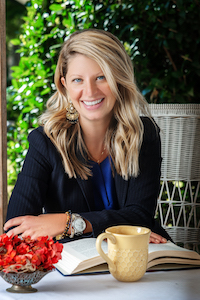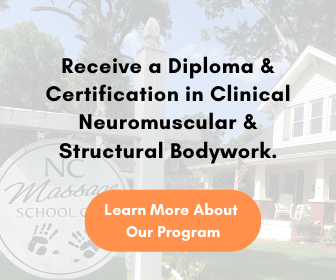What is Cupping Therapy?
Cupping therapy is a traditional healing method with a rich history, tracing its roots back to ancient Chinese and West Asian civilizations. Utilized by various cultures over thousands of years, this therapeutic practice has found its way into modern holistic and alternative medicine due to its reported benefits and non-invasive nature.
In cupping therapy, practitioners place cups on specific points of the body, creating a vacuum inside the cup, which lifts the skin. This action stimulates blood flow, releases toxins, and alleviates various ailments. As such, it is widely employed to address pain-related conditions and promote overall well-being.
Despite being a historical practice, cupping has gained considerable attention in recent years, particularly among athletes and those seeking alternative pain relief methods. It’s a unique therapeutic approach that marries traditional wisdom with contemporary health practices, and it continues to be a topic of intrigue and study in the field of complementary medicine.
The Procedure of Cupping Therapy
One of the aspects of cupping therapy that often intrigues individuals is the unique process by which it is performed. Depending on the chosen method, this may involve using heat, applying oils, or even minor skin punctures prior to the placement of the cups.
The primary types of cupping include dry, running, and bleeding. In dry cupping, a heated cup creates a vacuum that draws the skin into the cup. Running cupping involves moving the cups over the skin with a lubricant to facilitate movement while bleeding cupping involves a minor skin puncture to allow the release of toxins via suctioned blood.
The cups can be made from various materials, including glass, plastic, bamboo, ceramic, metal, or silicone. The number of cups used can vary, with three to five being the average.
The application and suction of the cups should not cause pain, although it may cause a sensation of tightness. After the therapy, it is common to have circular red or purple marks on the skin where the cups were placed. These are not bruises but marks from the suction and increased blood flow, and they fade after a few days.

Potential Benefits of Cupping Therapy
Cupping therapy can yield a variety of potential benefits. These benefits can vary from person to person and depend on a range of factors, including the specific condition being treated and individual responses to treatment. Here are some of the potential benefits of cupping therapy:
- Pain Reduction: One of the most commonly reported benefits of cupping therapy is pain relief. This can apply to various types of pain, including muscle tension, joint pain, and chronic pain conditions.
- Decreased Inflammation: Cupping therapy can help reduce inflammation, improving pain relief and function.
- Improved Blood Flow: Cupping therapy can stimulate increased blood circulation in the treated areas by creating suction on the skin. This enhanced blood flow can help nourish tissues and facilitate healing.
- Increased Range of Motion: Cupping therapy can help improve the range of motion in joints by relieving muscle tension and improving circulation.
- General Relaxation: Many people report that cupping therapy provides a relaxing, therapeutic experience, which can contribute to overall stress reduction and well-being.
Types of Cupping Therapy
Cupping therapy has been used for thousands of years to treat various ailments. Yet, despite its long history, not all cupping therapies are the same. Different techniques are used in cupping therapy, each offering its unique approach and potential benefits. Let’s look at the various cupping methods: dry, running, and bleeding cupping.
Dry Cupping
This is the most common form of cupping. In dry cupping, the practitioner creates a vacuum inside a cup and places it on the skin. The vacuum is traditionally made by heating the cup’s inside, often done by briefly setting an alcohol-soaked cotton ball on fire inside the cup. A more modern approach uses suction to remove air from the cups. The vacuum pulls the skin into the cup, stimulating blood flow and healing.
Running Cupping
Also known as gliding or sliding cupping, running cupping is a variant of dry cupping. Before placing the cups, the practitioner applies oil or lotion to the skin. After applying the cups, they are gently moved across the skin, providing a massage effect. This method is particularly used for relieving muscle tension and promoting relaxation.
Bleeding Cupping
Also known as wet cupping or Hijama, this method involves creating a small incision on the skin before placing the cup. The suction pulls out a small quantity of blood. Proponents believe this method helps to remove toxins and harmful substances from the body. It should be noted that this method should only be performed by a trained practitioner and is only suitable for some.
Each type of cupping offers unique benefits and may be better suited to different conditions or patient preferences. It’s crucial to discuss with a professional which type of cupping therapy may be most beneficial for your specific needs.

Risks and Potential Complications of Cupping Therapy
Like any therapy, cupping comes with its own potential risks and complications. Individuals need to understand these risks and consult with a healthcare professional before undergoing cupping therapy. Some of the potential risks and complications associated with cupping treatment include:
- Bruising: Some bruising is common due to the suction created during cupping therapy. This is typically mild and temporary but may be more severe in individuals with sensitive skin or certain medical conditions.
- Burns: If heated cups are used, there is a risk of burns. This is why seeking treatment from a trained and qualified practitioner is crucial.
- Fatigue: Some individuals may feel fatigued after cupping therapy. This is often a temporary response as the body adjusts to the therapy.
- Headaches: Cupping therapy can sometimes lead to headaches, though this is not typically common.
- Muscle Tension or Soreness: While cupping therapy often aims to relieve muscle tension, it can sometimes lead to temporary increased tension or soreness.
- Skin Infections or Scarring: Although rare, there is a potential risk of skin infection or scarring, particularly with wet cupping, which involves small incisions in the skin.
- Nausea: Some individuals may experience nausea after cupping therapy, although this is relatively rare.
Remember, discussing any concerns or potential risks with a qualified health professional before undergoing cupping therapy is essential.

Cupping Class for Continuing Education
“What the Cup” is an innovative and comprehensive introduction to cupping massage from an orthopedic perspective. This engaging and informative class provides an easy-to-grasp, thorough understanding of the basics of cupping therapy.
Your Instructor
Our expert instructor, Dr. Joi brings a unique blend of licensed massage and physical therapy to the course. Her successful fusion of orthopedic science with the intuition and art of massage and her approachable teaching style makes the learning process enjoyable and easy.
Take Your Skills to the Next Level
Upon completing this class, you’ll be ready to implement your newfound knowledge and skills immediately, enhancing your practice and enriching your client experiences. Expect a surge in your cupping knowledge, palpation, assessment, and treatment skills. Additionally, you’ll gain specific marketing insights to boost your visibility and profits while taking your practice’s awesomeness to the next level!
Address Tissue Issues
Injuries often leave a host of complications in their wake, from damaged tissues and pain to limited motion and more. The class focuses on reducing these ’tissue issues’ to alleviate pain and impairments, demonstrating how cupping therapy can restore proper function to the movement system effectively and efficiently.
Why Should You Enroll?
This course empowers you to:
- Learn cupping therapy from an advanced orthopedic viewpoint.
- Master both basic and intermediate cupping skills to treat your clients successfully.
- Understand the physiology of both injury and cupping and their interrelation.
- Become proficient in cupping documentation, allowing for the easy replication of successful treatments.
- Gain confidence in using cupping therapy for a variety of orthopedic injuries.
- Develop effective marketing strategies to grow your cupping brand and profits.
If you’re ready to elevate your practice and enhance your skills, don’t wait.
Join us now and transform your approach to therapeutic massage. Register today!

